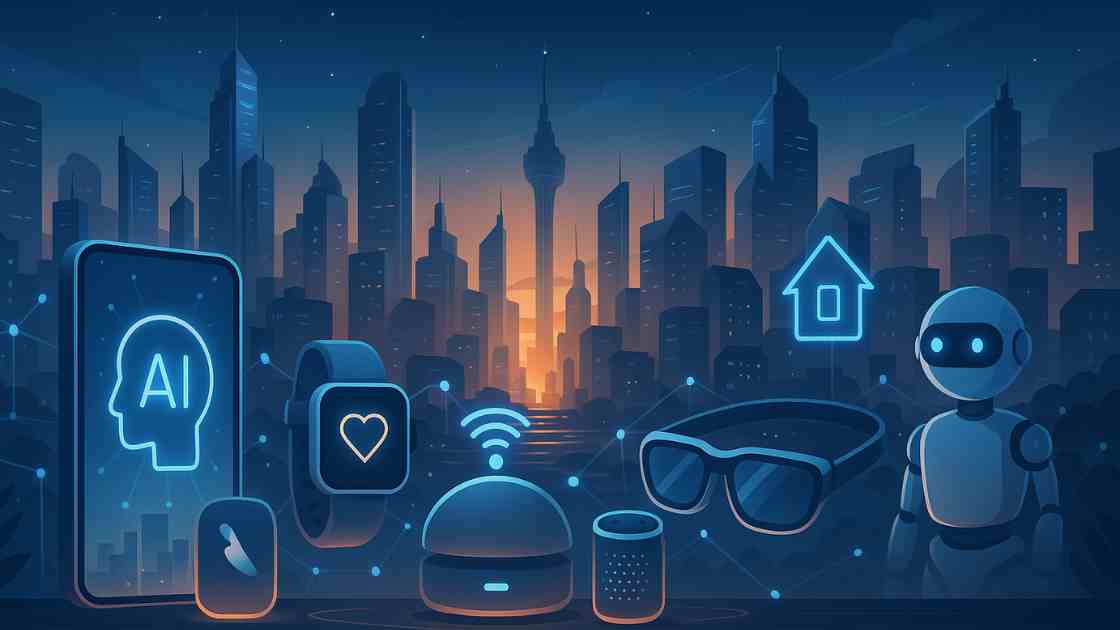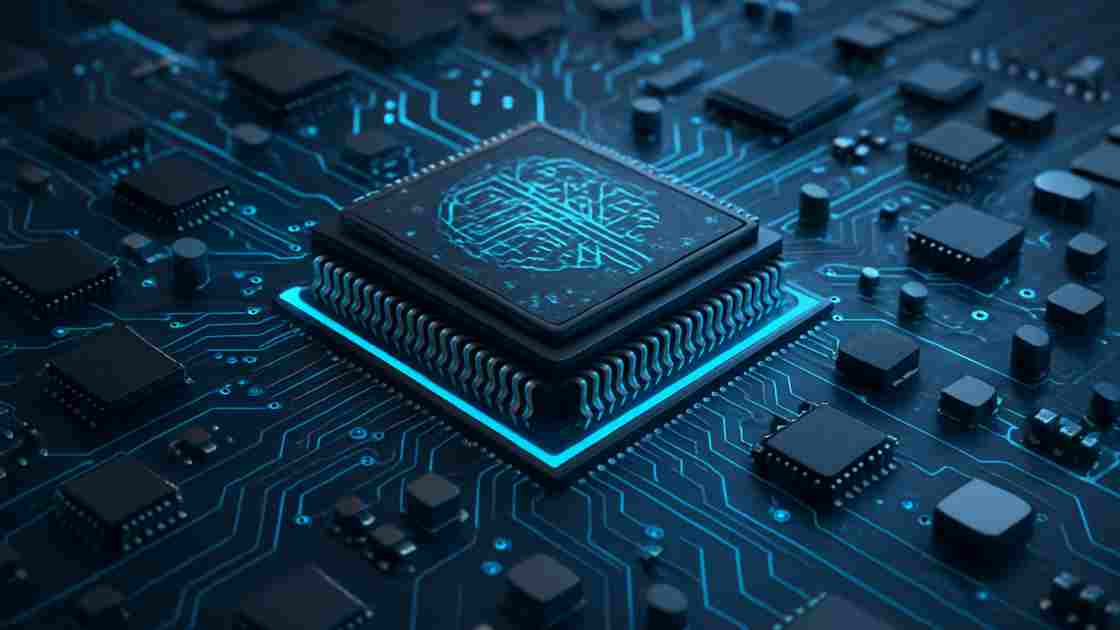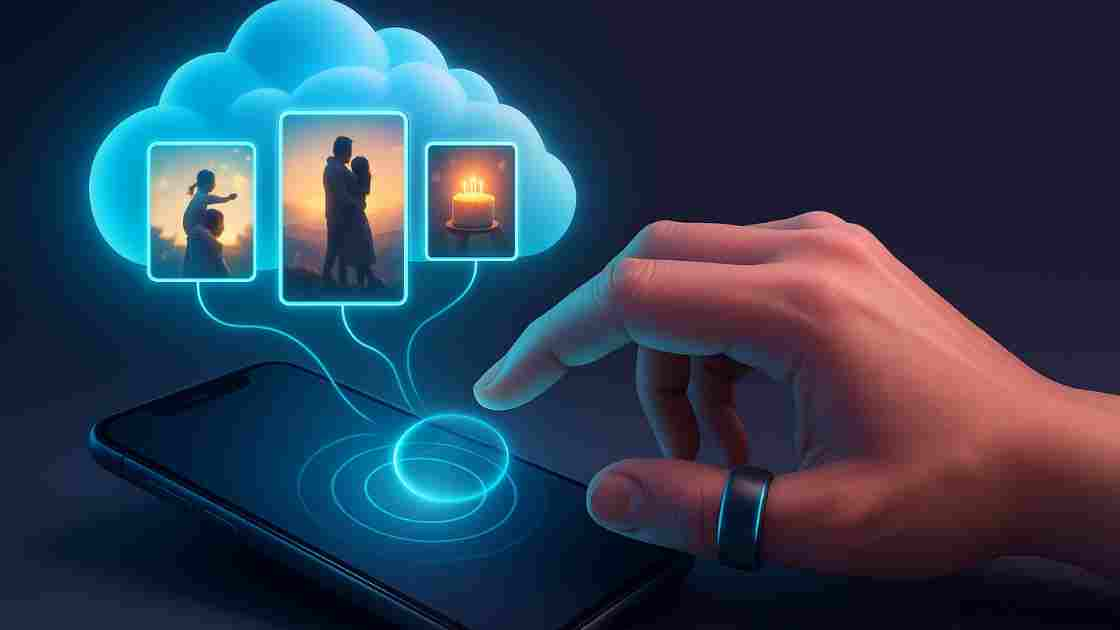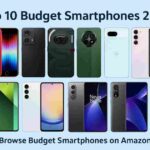Nubbin Technology Explained: The Future of Smart Devices (2025)

Why Emerging Tech Matters?
The world of technology is moving faster than ever. Every few years, we witness new breakthroughs that redefine how we interact with the world — from smartphones to smart homes, and even the best AI gadgets of 2025. From AI assistants to wearable tech, innovation is weaving itself deeper into our daily lives.
One of the latest concepts gaining buzz in 2025 is Nubbin Technology — a potential game-changer that could revolutionize the next generation of smart devices. But what exactly is Nubbin Technology, and why are tech experts so excited about it? Let’s dive in.
What is Nubbin Technology?
At its core, Nubbin Technology refers to a new class of micro-interactive nodes (or “nubbins”) embedded into devices to allow ultra-responsive, localized, and personalized interactions. Think of them as tiny smart control points that can recognize touch, pressure, motion, or even environmental factors — all while being energy-efficient, modular, and adaptable.
Rather than relying solely on large screens, voice assistants, or traditional interfaces, Nubbin Tech aims to turn the physical surfaces of gadgets into intelligent, responsive hubs. Each nubbin acts like a mini sensor and processor, allowing users to control, customize, or receive feedback directly from different parts of a device — without interrupting their experience.
In simple terms: Nubbin Technology lets gadgets become “aware” at multiple points, offering smoother, smarter, and more personalized interactions.
Wait — Isn’t Nubbin Technology from Black Mirror?
If you’ve seen viral TikTok videos showing a small round device called the “Nubbin” placed on people’s temples to access memories — you’re not alone.
That device is actually a fictional invention from the Netflix series Black Mirror Season 7, created as part of an elaborate marketing campaign. In the show, the Nubbin chip allowed users to relive dreams and memories inside a virtual consciousness, blurring the line between reality and imagination.
Important to note:
The Nubbin device seen in Black Mirror is not real — it’s a fictional concept.
However, the idea of localized, intelligent interaction points — what we are calling Nubbin Technology in real-world discussions — is very real and already influencing how future smart devices are designed.
In this article, when we talk about Nubbin Technology, we’re exploring the genuine future of micro-interactive nodes in smart gadgets — not the fictional brain chip shown in entertainment media.
How Nubbin Technology Works
To truly understand the transformative potential of Nubbin Technology, it’s important to look at the technological innovations working behind the scenes. Each “nubbin” isn’t just a passive point on a device — it’s a miniature marvel combining advanced sensors, efficient communication, artificial intelligence, and elegant design. Let’s break it down:
Micro-Sensors and Localized Processors

At the heart of Nubbin Technology are micro-sensors — tiny, embedded components capable of detecting a wide range of physical interactions. These sensors can measure variables such as:
- Touch sensitivity (light tap vs firm press)
- Temperature (body heat or environmental shifts)
- Pressure variations (soft vs hard presses)
- Proximity detection (hand gestures without touching)
- Motion tracking (swipes, taps, flicks)
What makes Nubbin Technology exceptional is that each nubbin includes localized processing capabilities. Instead of sending raw sensor data back to a central processor (which consumes time and energy), each nubbin can process inputs instantly at the source.
Why it matters:
This decentralized architecture drastically reduces latency (the delay between user action and device response), allowing devices to feel more fluid, responsive, and natural in real-time interactions.
Imagine tapping lightly on the corner of your laptop or smartwatch — and the device immediately understands and reacts without needing to “think” about it somewhere else first. That’s the power of localized processing at the nubbin level.
Low-Energy Communication
Because devices are becoming smaller and more portable, power efficiency is critical.
Nubbins utilize ultra-low-power communication protocols — either through wireless mesh systems or embedded short-range data links — to transmit essential information without draining device batteries.
Key aspects of low-energy communication in Nubbin Technology include:
- Efficient Wake/Sleep Cycles: Nubbins stay in low-energy standby mode until activated by user interaction.
- Minimal Data Transfer: Only essential signals are transmitted, keeping wireless traffic low.
- Localized Networking: Nubbins can communicate with nearby processors or AI hubs without relying on long-distance or heavy-bandwidth connections.
Why it matters:
This makes Nubbin-enabled devices perfect for wearables, smart rings, earbuds, and portable gadgets where battery life is a premium.
In short, Nubbin Technology ensures continuous interaction without constant recharging — crucial for user convenience.
AI-Driven Personalization
Nubbin Technology is not just about touch and communication — it’s intelligent.
Each nubbin is linked to a machine learning model that constantly learns from user behavior over time. Through repeated interactions, it builds a personalized database of preferences, touch patterns, and gestures.
How AI-driven personalization works:
- Gesture Recognition: The nubbin distinguishes between different finger taps, pressure levels, or swipe motions — tailored to the user’s habits.
- Predictive Responses: If a user often taps twice quickly to open an app, the system learns this preference and anticipates the action.
- Adaptive Feedback: Over time, Nubbin Tech can suggest or modify responses based on contextual clues (e.g., morning vs evening habits).
Why it matters:
Devices will no longer feel generic — instead, they will behave as if they understand each individual user intimately, making interaction faster, more intuitive, and even emotionally satisfying.
This opens doors to creating truly personalized tech experiences that feel like natural extensions of human behavior.
Seamless Integration
Despite their powerful capabilities, nubbins are designed to be nearly invisible.
They are embedded underneath device surfaces, woven into fabrics, or molded into frames without adding noticeable bulk or compromising aesthetics.
Design aspects of Nubbin integration:
- Ultra-Miniaturization: Advanced manufacturing allows nubbins to be as small as a grain of rice, fitting into tight spaces.
- Material Compatibility: Nubbins can be embedded within metals, plastics, fabrics, glass, or flexible polymers.
- Surface Uniformity: Devices retain sleek, minimalistic designs — users may not even notice where the nubbin zones are until they interact.
Why it matters:
Seamless integration ensures that futuristic smart functionality doesn’t come at the cost of beautiful, simple, user-centered designs — a key requirement for modern tech consumers.
Imagine a smartwatch band that looks like ordinary leather but responds to your taps, or a mirror that hides invisible touch zones around the edges without any buttons or screens. That’s the seamless beauty Nubbin Technology promises.
✨ Quick Summary of How Nubbin Technology Works:
| Component | Function |
|---|---|
| Micro-Sensors & Localized Processors | Instantly detect and react to touch, pressure, motion, and proximity. |
| Low-Energy Communication | Ultra-efficient signal transmission, conserving battery life. |
| AI Personalization | Learns and adapts to individual user habits and gestures. |
| Seamless Integration | Invisible embedding into devices and fabrics without adding bulk or disrupting design. |
Applications of Nubbin Technology in Smart Devices
Here’s where things get truly exciting — Nubbin Technology could unlock a whole new world of possibilities across consumer gadgets, reshaping how we interact with technology in ways we’ve never experienced before.
Let’s explore where Nubbin Tech could have the biggest impact:
📱 Smartphones & Tablets
Imagine tapping on the back corner of your smartphone to instantly open your favorite app, or squeezing the side of your tablet to mute incoming calls — all without pressing any visible button.
With Nubbins embedded into the surfaces of affordable smartphones and tablets, future devices could:
- Make smartphones smarter, slimmer, and even more intuitive to use.
- Offer shortcut triggers through localized touchpoints.
- Enable pressure-sensitive commands without cluttering design.
🎮 Gaming Gear
Gaming controllers could evolve dramatically with Nubbin Technology.
Instead of relying solely on static buttons or joysticks, imagine controllers that adapt dynamically to your grip pressure during gameplay — just as today’s gaming laptops and gadgets are pushing the boundaries of immersive experiences.
Applications in gaming could include:
- Pressure-sensitive adaptive buttons for complex actions.
- Customized tactile feedback zones for deeper immersion.
- More intuitive gameplay with reduced input lag.
💻 Laptops & Keyboards
Laptops and keyboards could become far more responsive and user-centric:
- Typing surfaces could detect how hard you press — adapting sensitivity automatically for faster, more comfortable typing.
- Specific areas of a laptop’s chassis could trigger special functions with a simple tap (e.g., launching apps, switching performance modes).
- Keyboards could use invisible nubbins to offer gesture control without bulky touchpads.
This could dramatically improve both productivity and user comfort in future computing devices.
🏠 Smart Home Devices
Nubbin Technology could revolutionize smart home interfaces — taking the convenience offered by today’s smart home gadgets to an entirely new level.
- Smart thermostats could detect a finger swipe near the surface to adjust temperature.
- Smart fridges could allow tapping different sections of the door for quick controls.
- Smart mirrors could let you change lighting, check weather, or scroll news with hidden gesture zones.
By eliminating the need for clunky screens or obvious buttons, smart homes could become more seamless, beautiful, and responsive.
⌚ Wearable Tech

Wearables like smart rings, fitness bands, and AR glasses stand to gain tremendously from Nubbin-enhanced responsiveness — building upon the innovations already seen in today’s best fitness trackers.
- Smart rings could detect micro-taps or skin gestures to trigger different commands.
- Fitness bands could adjust workout modes automatically based on swipe or tap intensity.
- AR glasses could allow users to tap discreetly on frames to answer calls, record videos, or navigate apps without touching a phone.
As wearables aim to stay minimalist yet powerful, Nubbin Technology offers the perfect solution to expand functionality without adding bulk.
📢 ✨ Key Takeaway:
Nubbin Technology is not just about smarter devices — it’s about creating devices that feel natural, intuitive, and almost human-like in how they respond to us.
By embedding intelligent, ultra-responsive nodes across surfaces, the next generation of gadgets will blur the lines between physical objects and digital intelligence — making interaction seamless, fast, and emotionally connected.
Can Nubbin Technology Help Revisit Memories?

While Nubbin Technology isn’t a memory storage system by itself, it holds fascinating potential for memory-triggered experiences. Imagine tapping a certain spot on your smart ring or smartphone and instantly revisiting a special photo, video, or journal entry tied to that touch point.
By combining Nubbin sensors with cloud storage and AI personalization, future smart devices could allow users to access meaningful memories seamlessly — creating a more emotional and connected relationship with their tech. Whether it’s recalling a favorite vacation moment or reliving a birthday celebration, Nubbin-enhanced devices could make memory sharing as simple as a tap.
In this way, Nubbin Technology could go beyond mere functionality — becoming a bridge between our physical interactions and our most cherished digital experiences.
The Future Potential: What Experts Are Saying
While Nubbin Technology is still in its early stages, early prototypes and patents suggest it could redefine user-device interaction.
According to tech analysts at FutureGadgetLabs, Nubbin Tech could:
- Reduce screen dependency, helping create cleaner, more minimalistic devices.
- Boost battery life by decentralizing processing tasks across small nodes.
- Enable smarter AI feedback loops, offering hyper-personalized responses.
- Enhance accessibility for users with disabilities, by providing multiple ways to interact physically.
Some experts even predict that Nubbin-enhanced devices could form the backbone of next-gen smart homes and ambient computing — where devices respond intelligently to your environment without needing screens or explicit commands.
Are There Any Real Devices Using Nubbin Technology Yet?
⚡ As of 2025, there are no mainstream consumer devices officially marketed as using “Nubbin Technology” by that exact name.
Currently, “Nubbin Technology” is more of a conceptual innovation — emerging from discussions around future micro-interactive smart interfaces — rather than an official commercial standard like Bluetooth or Wi-Fi.
It appears mostly in early research, patent filings, R&D lab experiments, and future product visions.
No mass-market gadget yet says “Powered by Nubbin Technology”.
However, here’s the truth:
Many existing devices already use very similar ideas — localized micro-sensors that could easily evolve into full-fledged Nubbin systems over the next few years.
Some real-world examples that closely resemble Nubbin-like technology include:
Current Devices Close to Nubbin Technology
| Device | How It Relates to Nubbin Tech |
|---|---|
| Google Pixel’s “Active Edge” (Pixel 2, Pixel 3) | You could squeeze the sides of the phone to trigger Google Assistant — a localized, pressure-based interaction similar to a nubbin. |
| Apple’s Force Touch and 3D Touch | Apple integrated pressure-sensitive touch layers into iPhones and MacBooks, enabling different actions based on touch pressure — very Nubbin-like in sensitivity. |
| Sony’s DualSense Controller (PS5) | The adaptive triggers adjust resistance based on in-game events, providing localized, dynamic feedback — much like responsive nubbins. |
| Meta Ray-Ban Smart Glasses | Tapping or swiping the glasses’ frame triggers actions like music control and call answering — using hidden, touch-sensitive zones. |
| Smart Rings (Oura, Evie) | These wearables use micro-sensors to detect biometrics and gestures from localized points. |
| Samsung Ballie Robot | Ballie is embedded with sensors across its surface to monitor its environment and respond — representing decentralized, surface-level responsiveness. |
How Nubbin Technology Takes Smart Devices Beyond Today’s Limits
To better understand how Nubbin Technology is set to transform future gadgets, here’s a side-by-side comparison:
| Feature | Existing Tech (Today’s Devices) | Nubbin Technology (Future Devices) |
|---|---|---|
| Interaction Style | Limited to specific touchpoints (screen, buttons, small zones). | Multiple intelligent nodes (“nubbins”) embedded across the device surface for seamless interactions. |
| Responsiveness | Centralized control; slower processing for complex gestures. | Instant localized response from each nubbin — faster, adaptive, and distributed. |
| Personalization | Some personalization through app or OS settings. | AI-driven personalization at the individual nubbin level — learns unique user habits and touch patterns. |
| Energy Efficiency | Moderate energy consumption; continuous communication with a central processor. | Ultra low-power localized processing at each nubbin, conserving battery and improving efficiency. |
| Examples | – Google Pixel Active Edge (squeeze to trigger assistant) – Apple 3D Touch (pressure-sensitive screens) – Sony DualSense Controller (adaptive triggers) – Smart Rings (Oura Ring, Evie Ring with micro-sensors) | – Nubbin-embedded smart rings – Nubbin-enhanced smartphones with full surface responsiveness – Nubbin-enabled smart home appliances and furniture (future concepts) |
| Memory Interaction | Limited — accessing memories requires opening apps or interfaces manually. | Seamless — a tap or gesture on a nubbin could trigger instant recall of photos, videos, or stored experiences. |
| User Experience | Screen-dependent, menu-heavy, sometimes app-overloaded; less natural. | More natural, screen-free, and emotionally connected smart interactions using touch, gesture, and localized AI. |
Final Thoughts: Is Nubbin Technology the Next Big Thing?
While still under active development, Nubbin Technology represents an exciting leap forward for tech innovation.
Its potential to create smarter, more intuitive, and less screen-dependent devices aligns perfectly with the growing demand for natural, seamless user experiences.
Moreover, its ability to make technology more personal — even emotional — by helping users revisit memories adds a new human touch to future smart devices.
Nubbin Technology could join other tech innovations shaping the future as it redefines how humans interact with machines.
At GadgetsBuzz, we’ll be keeping a close eye on Nubbin developments. As prototypes become products and more brands experiment with micro-interactive tech, Nubbin Technology could quietly — but powerfully — transform everything from how we play games to how we manage our homes — and even how we remember our lives.
If you’re excited about the future of gadgets, stay tuned — the Nubbin revolution may be just beginning.
✨ Curious how emerging tech will shape the gadgets you use every day? Check out our Best AI Gadgets of 2025 to see innovation in action!
FAQs About Nubbin Technology
What is Nubbin Technology?
Nubbin Technology refers to a new innovation involving tiny micro-interactive nodes (“nubbins”) embedded into devices. These nubbins allow smart devices to detect touch, pressure, motion, and gestures at multiple localized points, creating more personalized and seamless interactions.
Is Nubbin Technology the same as the Nubbin device seen in Black Mirror?
No, the Nubbin device featured in Black Mirror Season 7 is fictional. It portrayed a brain implant for memory access in a sci-fi setting.
Real-world Nubbin Technology focuses on physical interaction points embedded in devices — not brain chips.
Are there any real devices using Nubbin Technology today?
As of 2025, no mass-market devices officially market themselves as using Nubbin Technology by name.
However, similar micro-interactive technologies exist in devices like:
Google Pixel’s Active Edge
Apple’s 3D Touch
Sony’s DualSense Controller
Smart rings like Oura and Evie
These show early forms of what Nubbin Tech could evolve into.
How could Nubbin Technology improve smartphones and wearables?
Nubbin Technology could allow smartphones, tablets, smartwatches, and rings to:
Recognize taps, swipes, and pressure without physical buttons
Launch apps or control features with simple touch gestures
Offer faster, more natural responses with ultra-low power usage
This would make devices slimmer, smarter, and more intuitive.
Could Nubbin Technology help users revisit memories?
Yes, future Nubbin-enabled devices might allow users to trigger memory experiences (like photos, videos, notes) simply by tapping specific touchpoints.
By combining Nubbin sensors with AI and cloud storage, technology could create deeply personal, memory-rich interactions.
Why is Nubbin Technology considered a breakthrough?
Experts believe Nubbin Technology could:
Reduce reliance on screens and buttons
Increase device responsiveness and personalization
Save battery life through localized processing
Make smart homes, wearables, and gaming gear more natural and immersive
Create more emotional connections between users and their devices
It represents a major step toward the future of ambient, intelligent computing.








